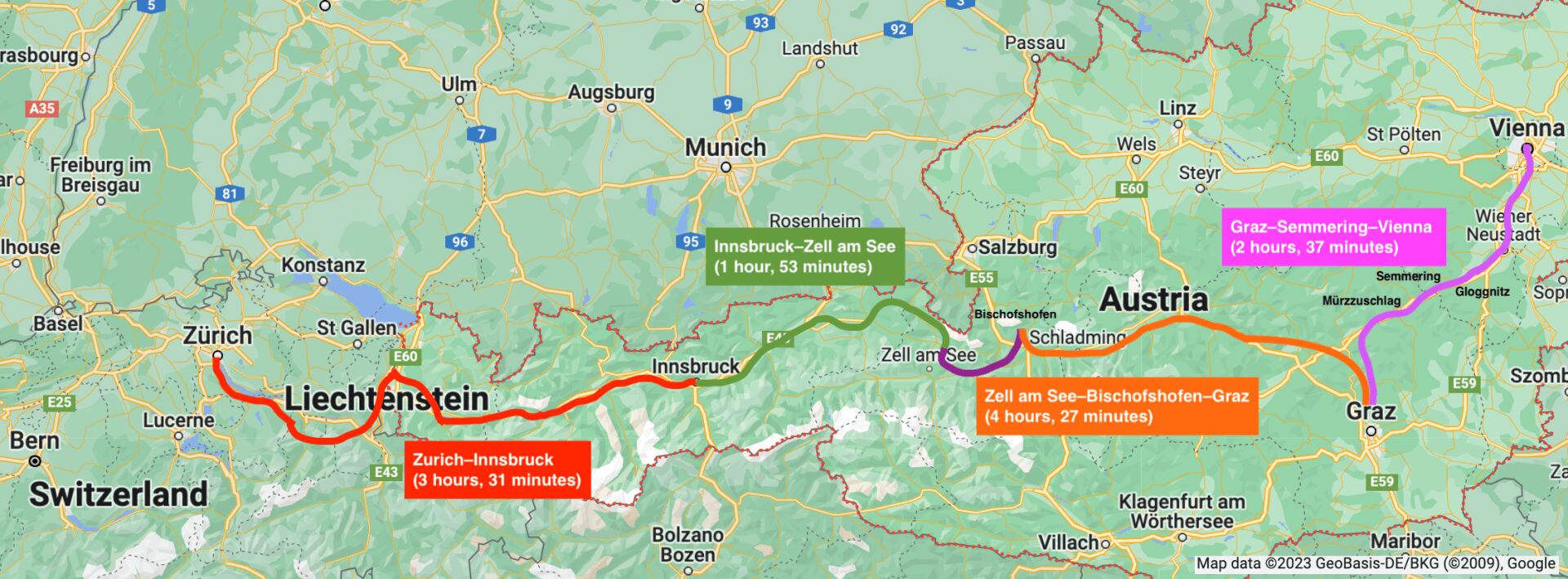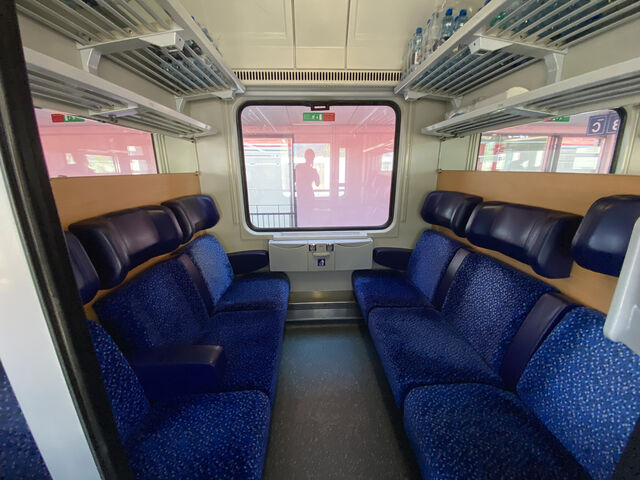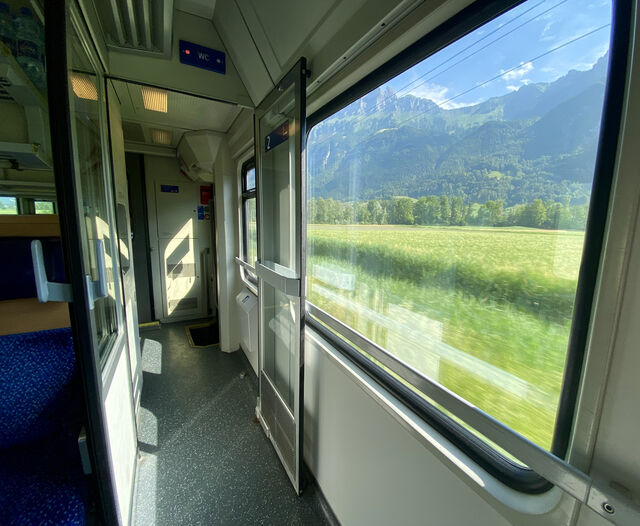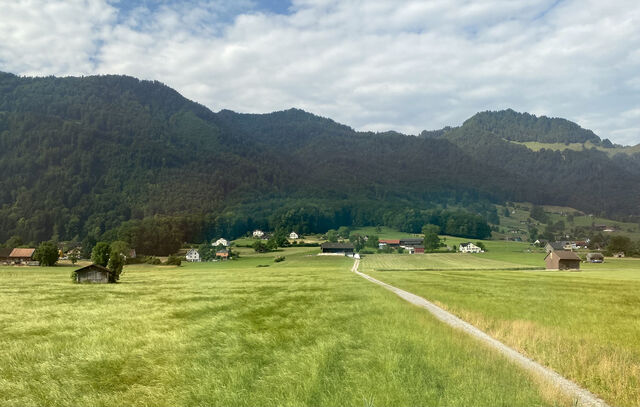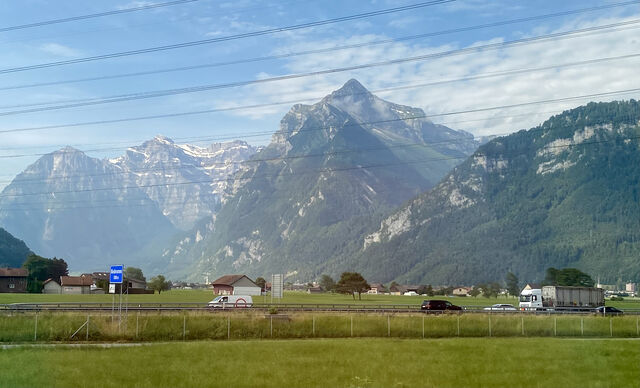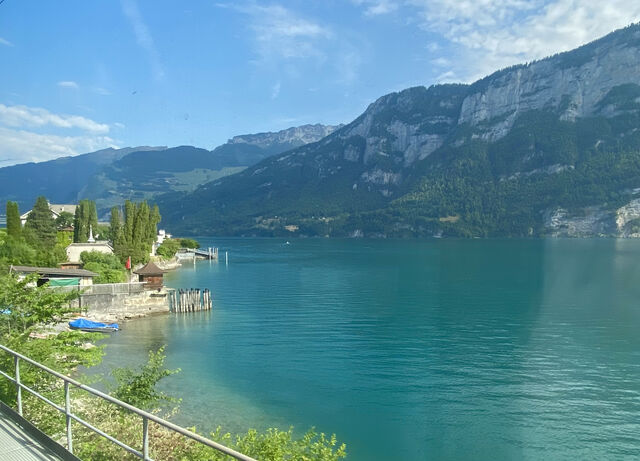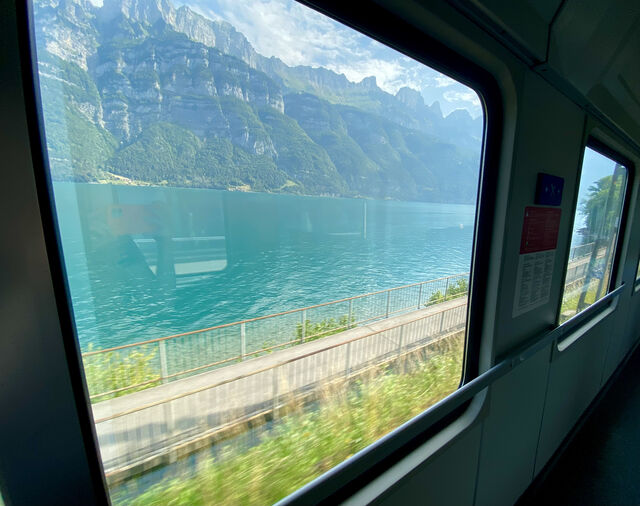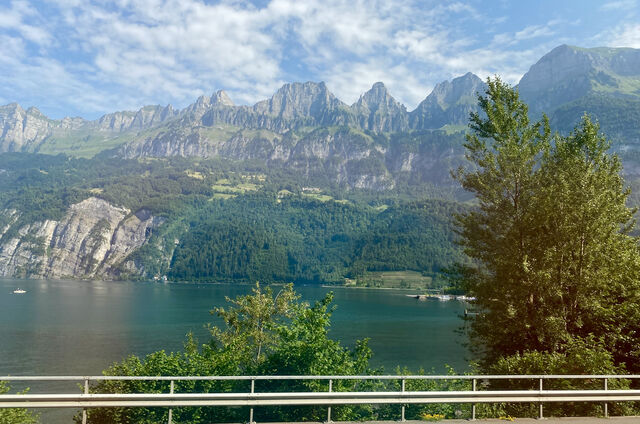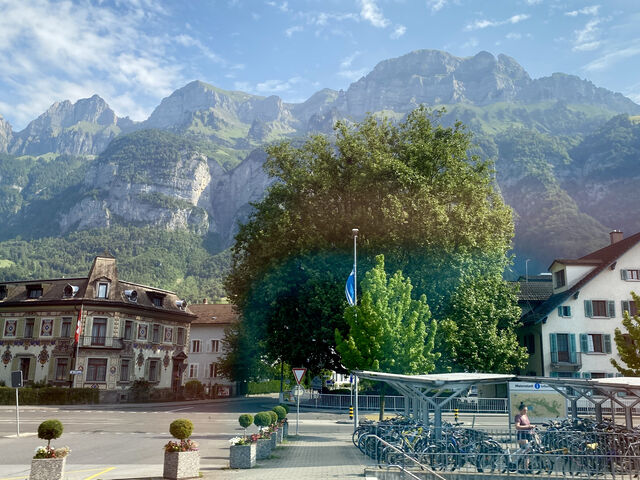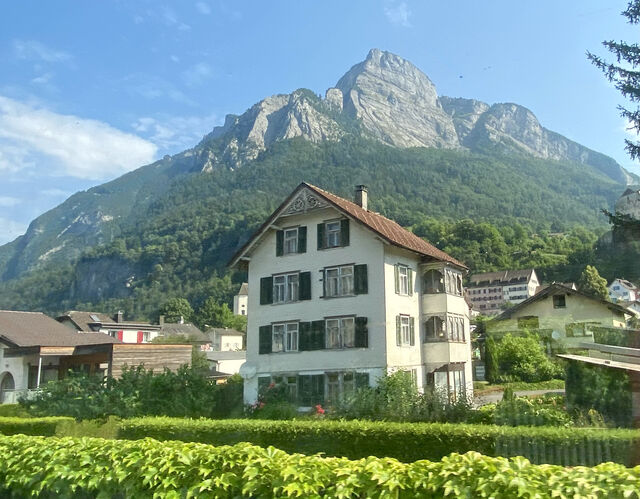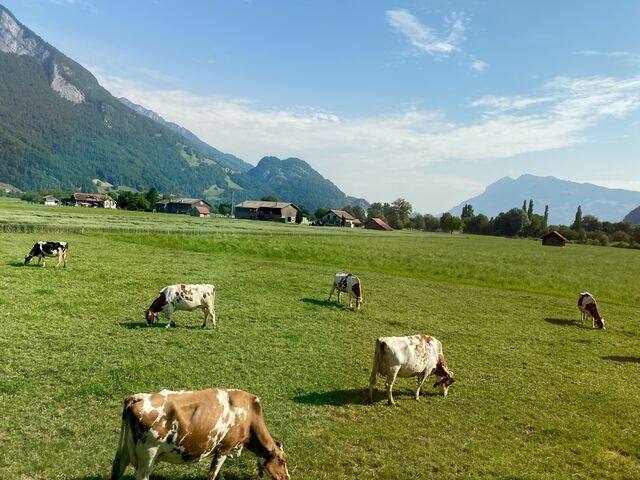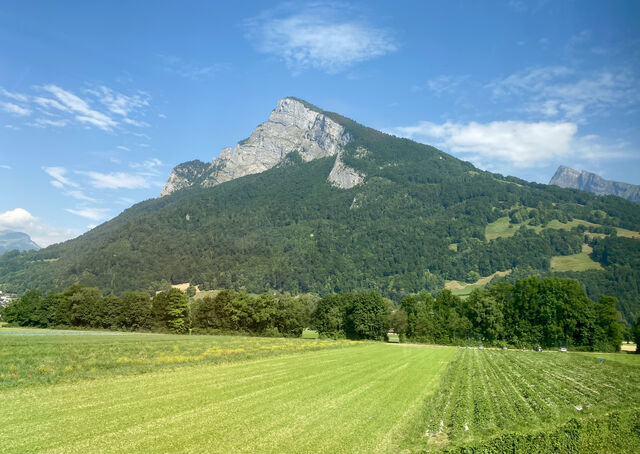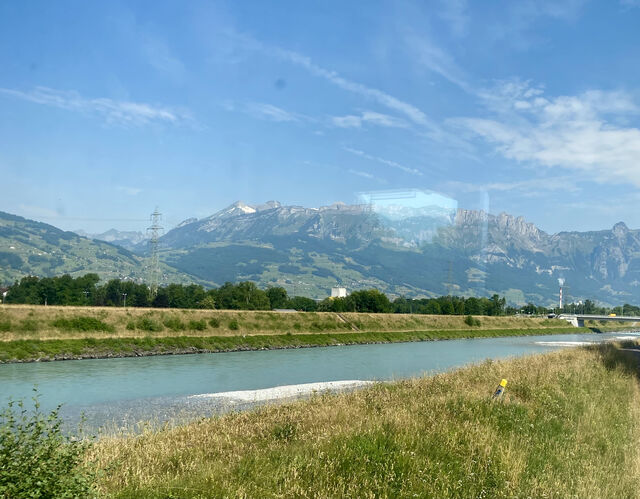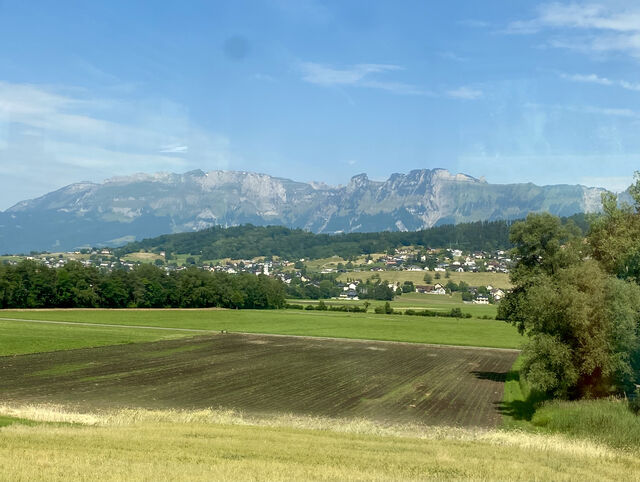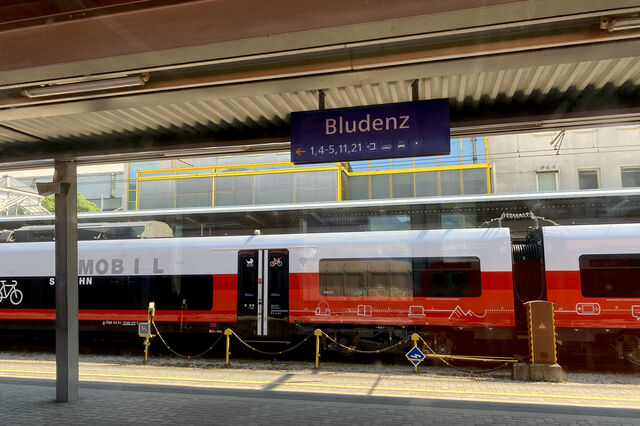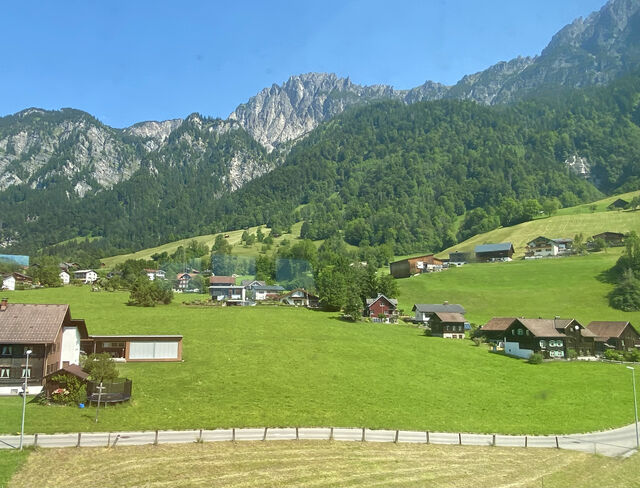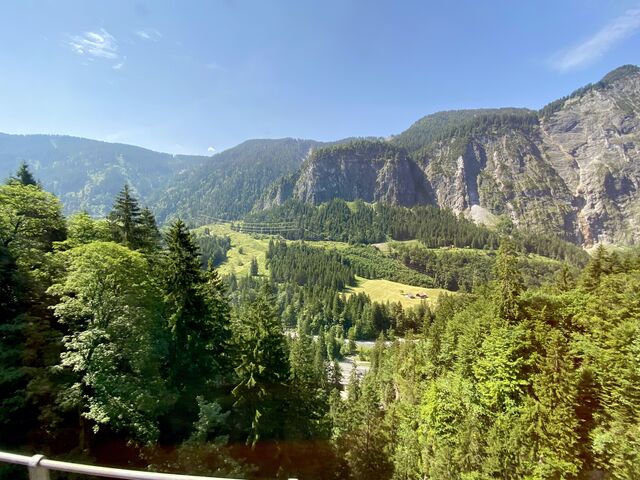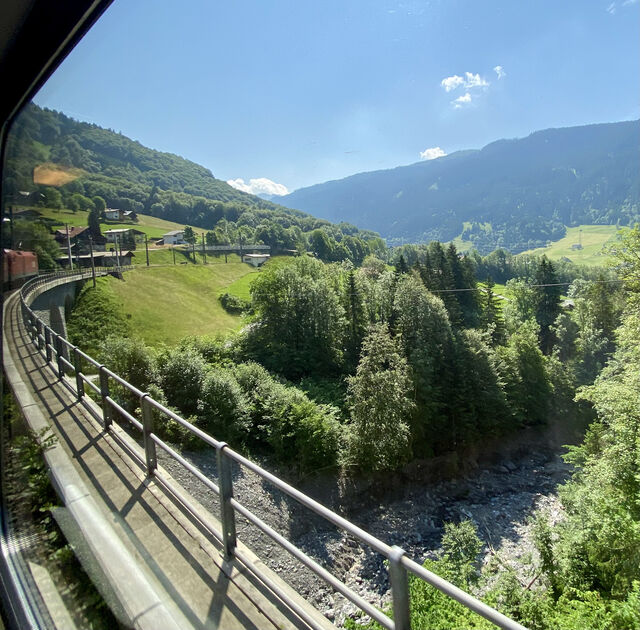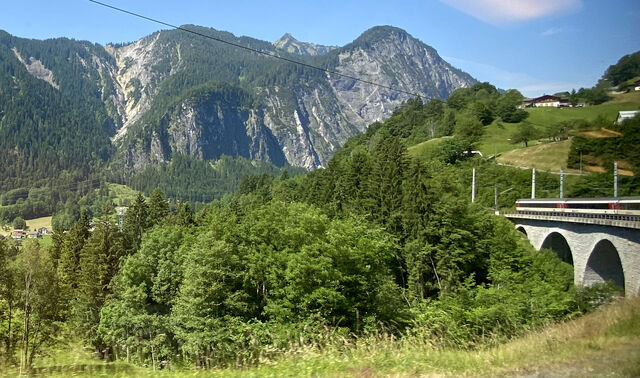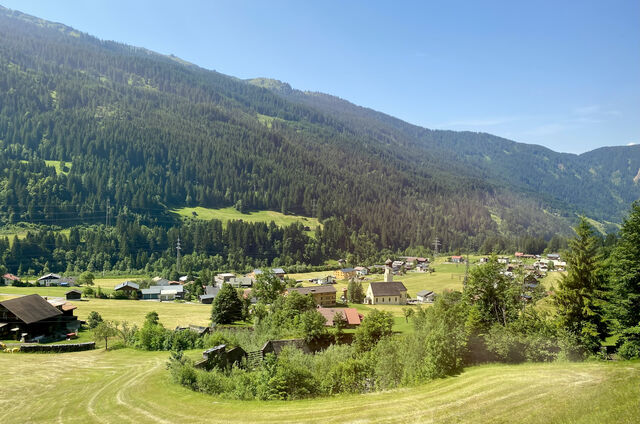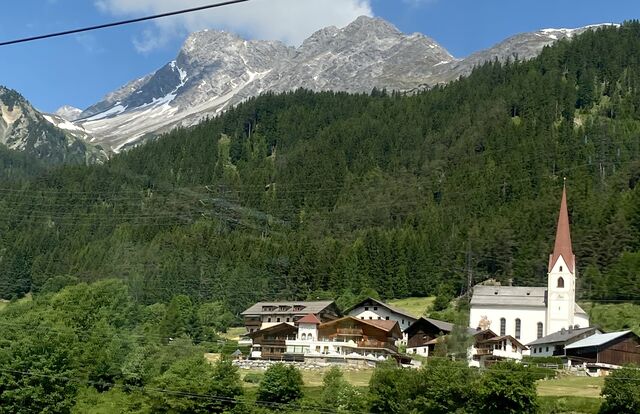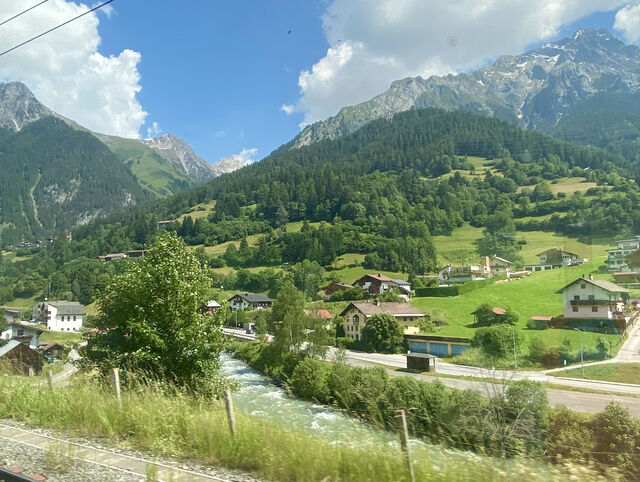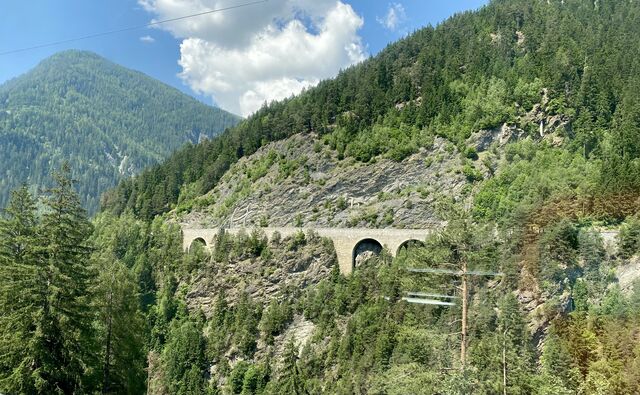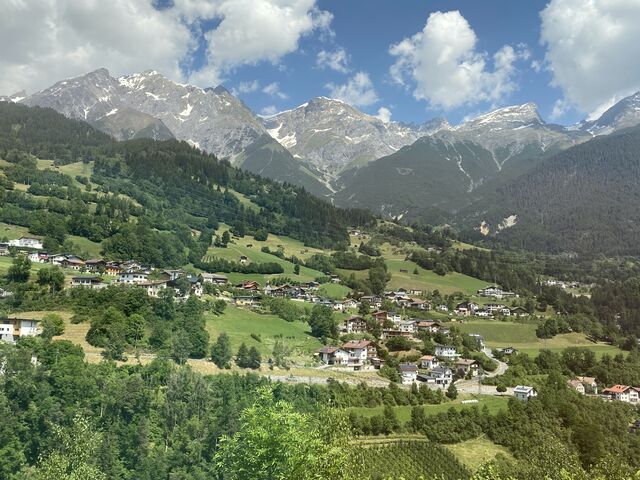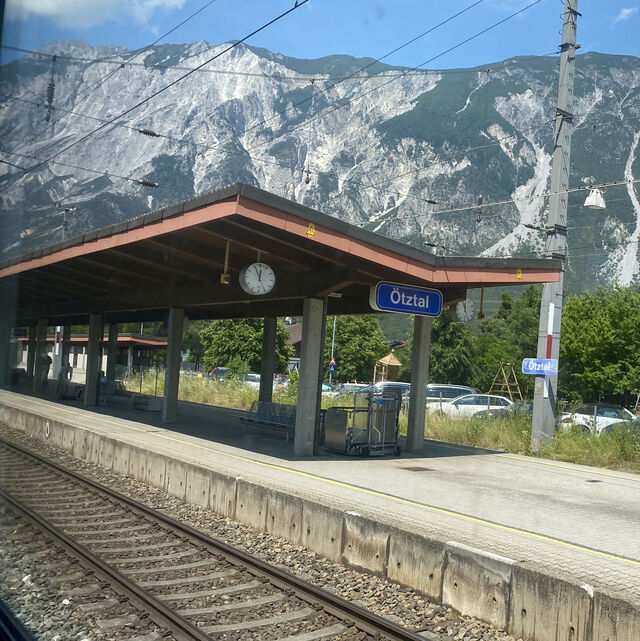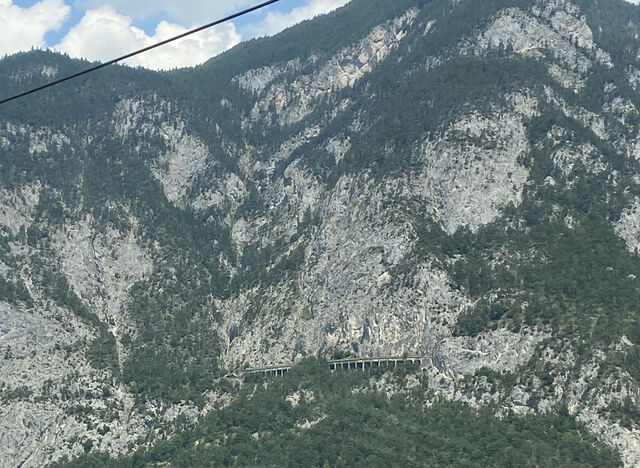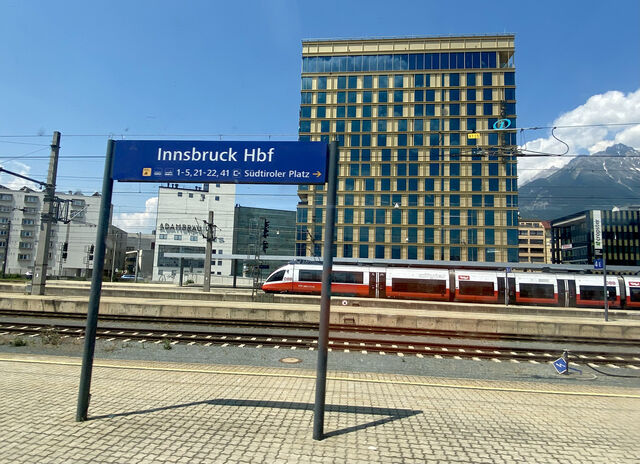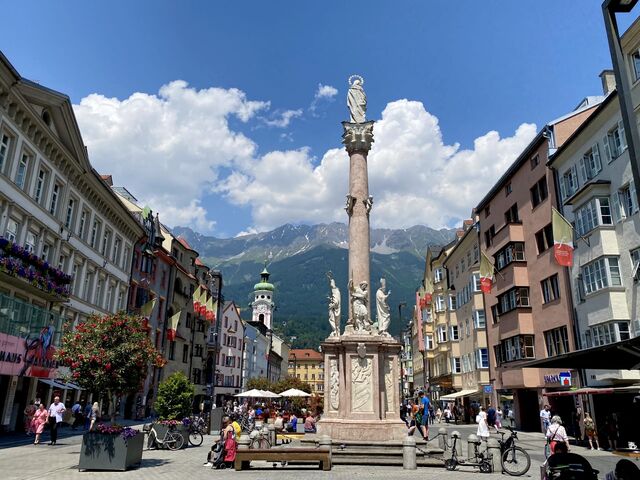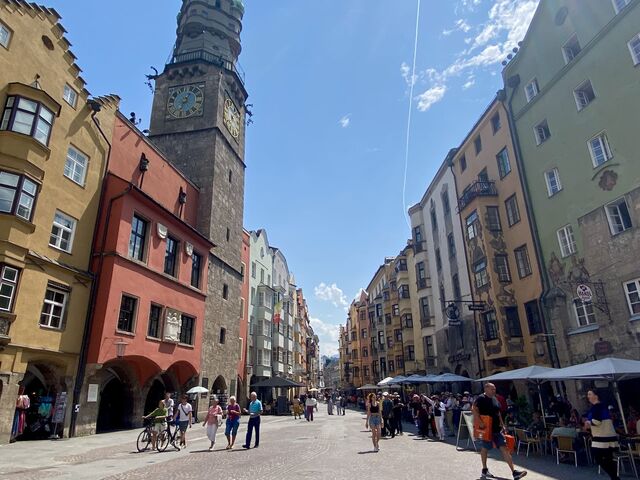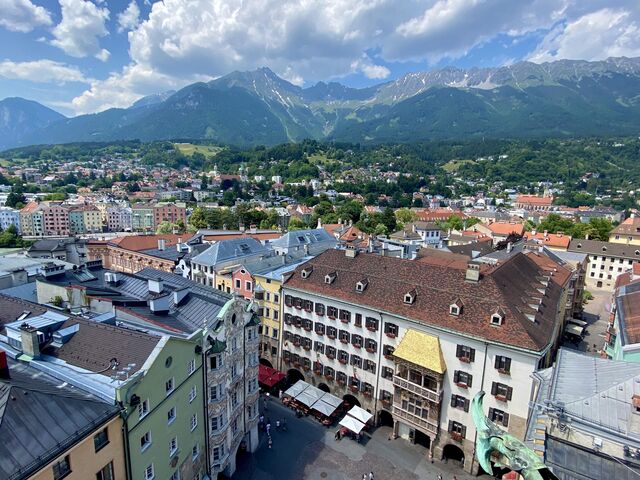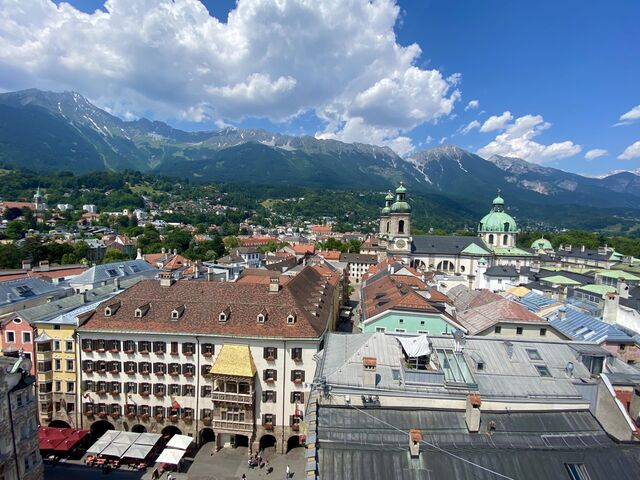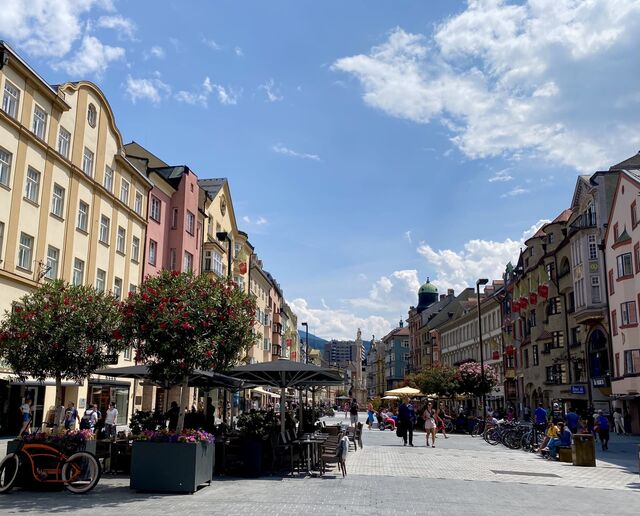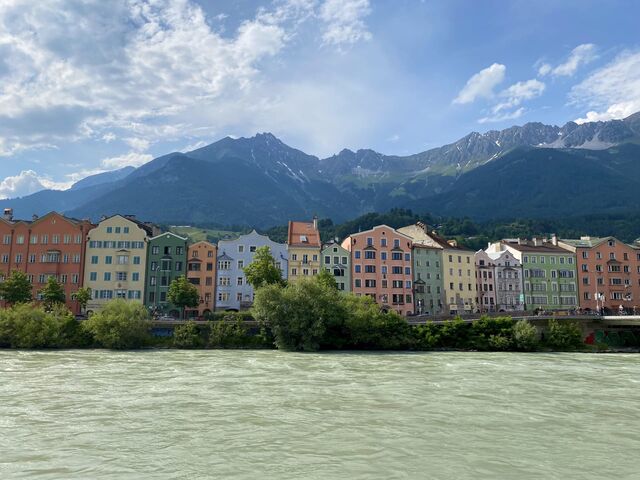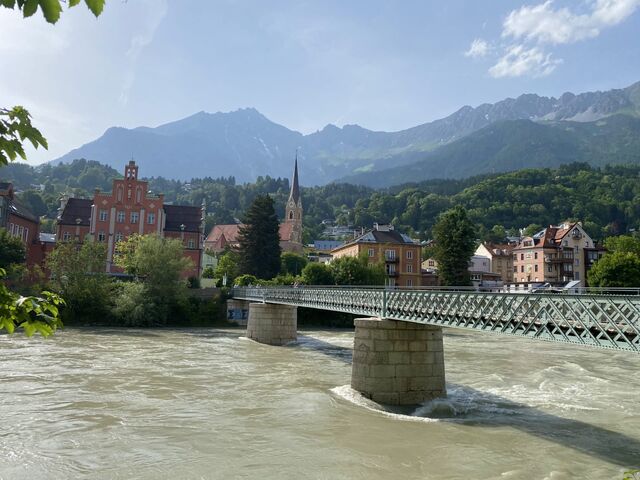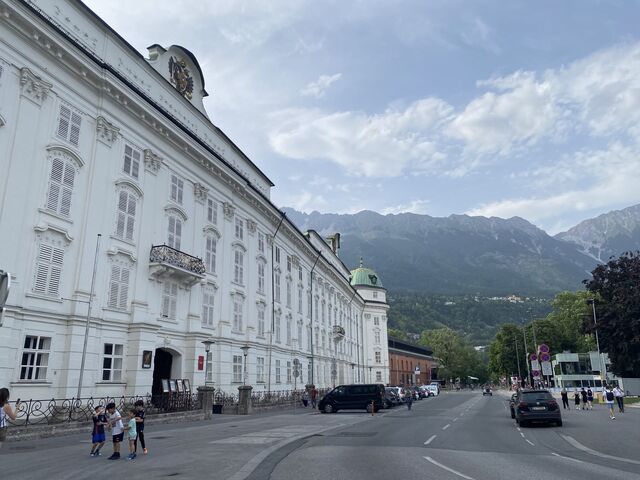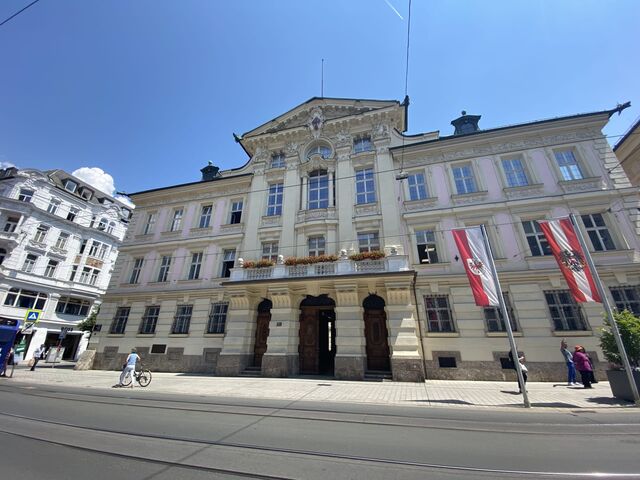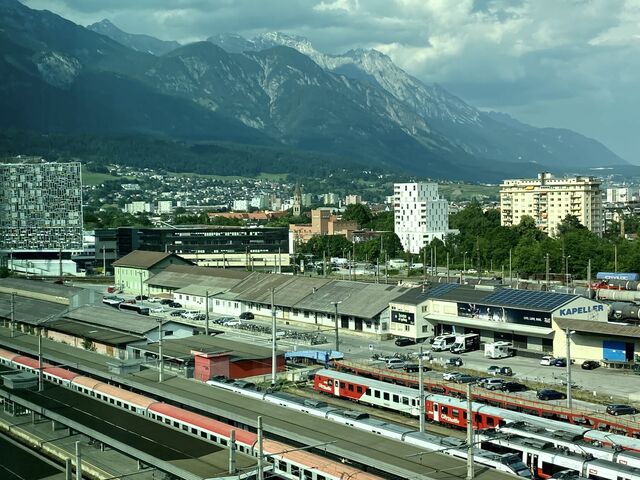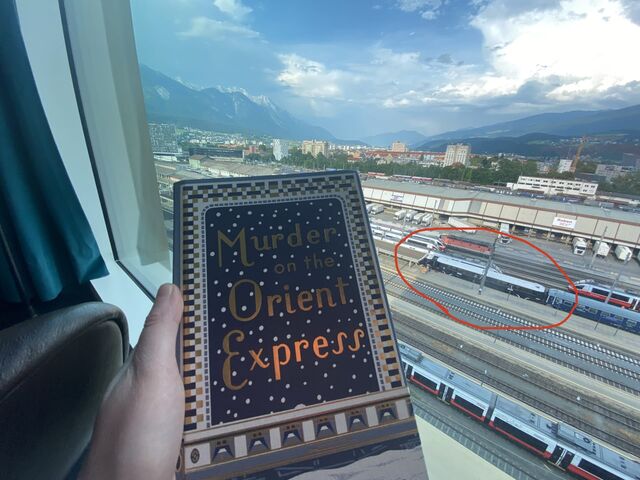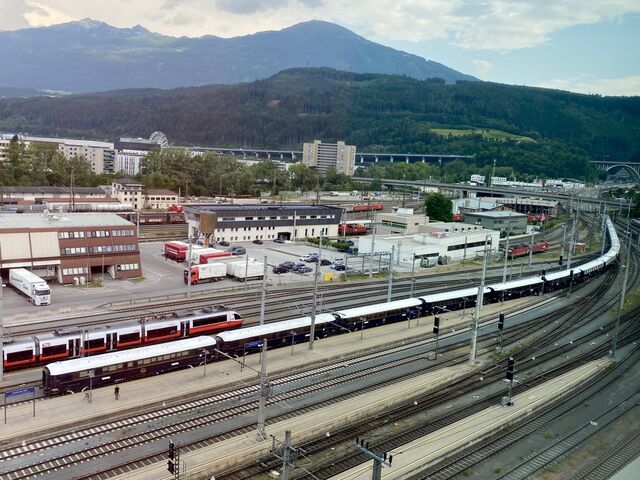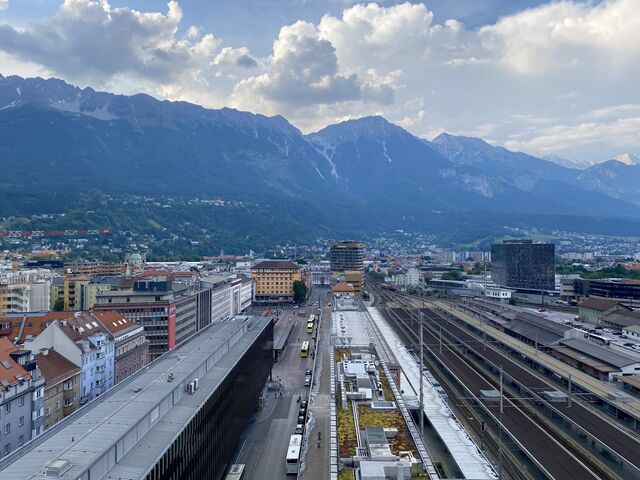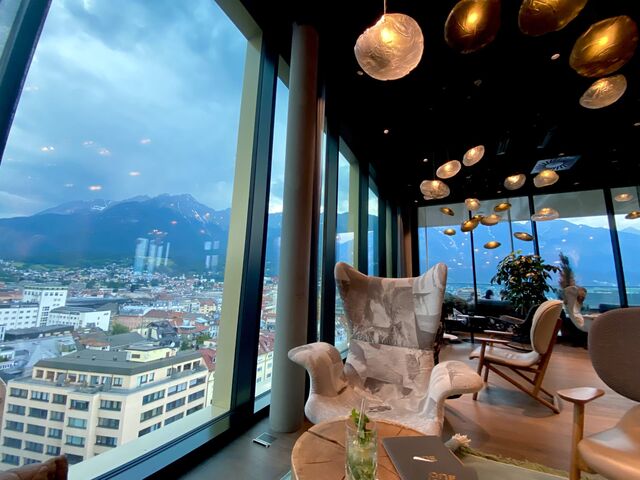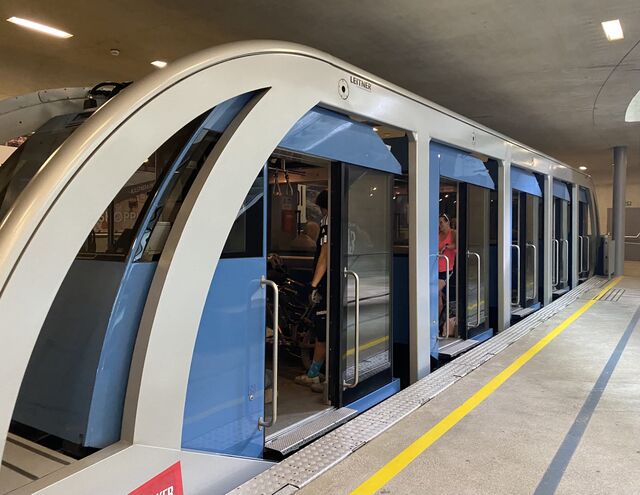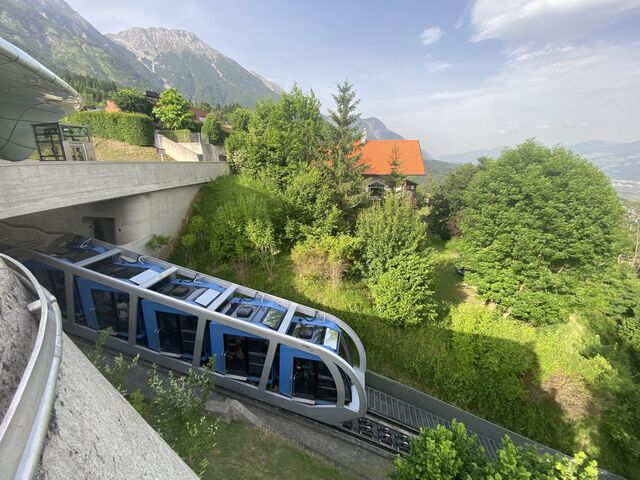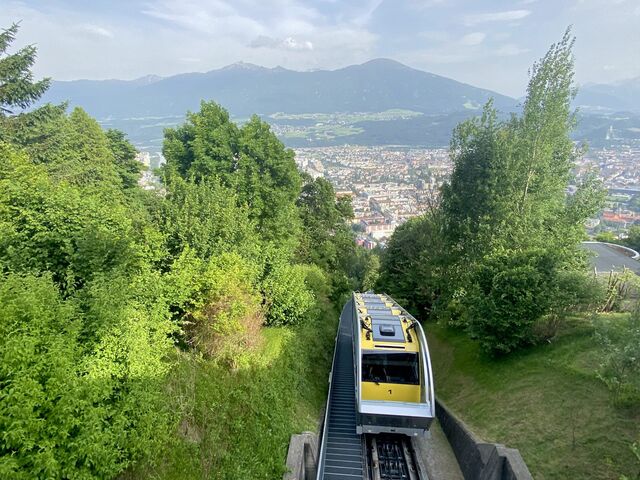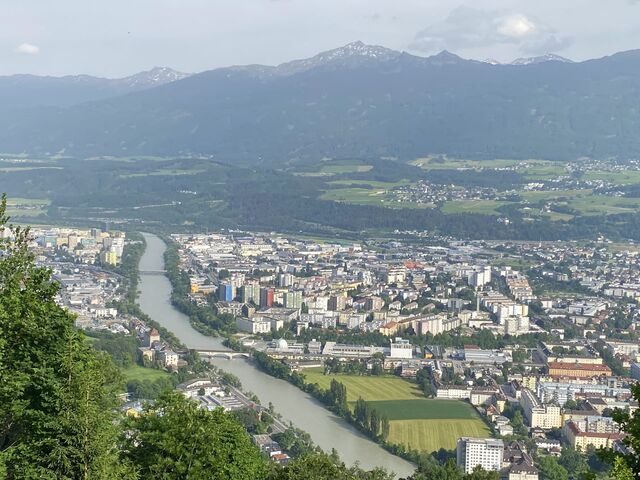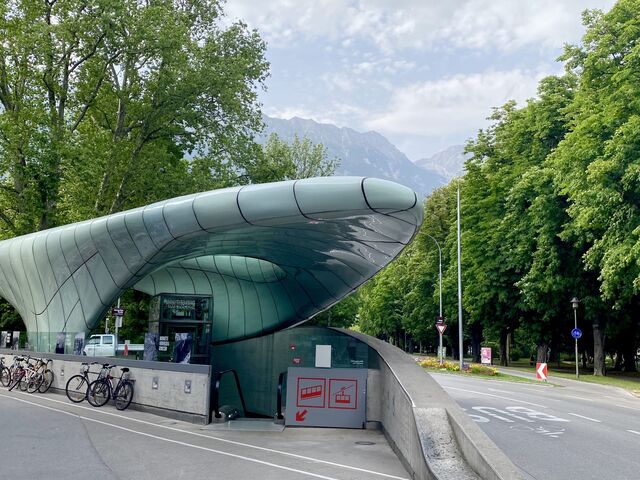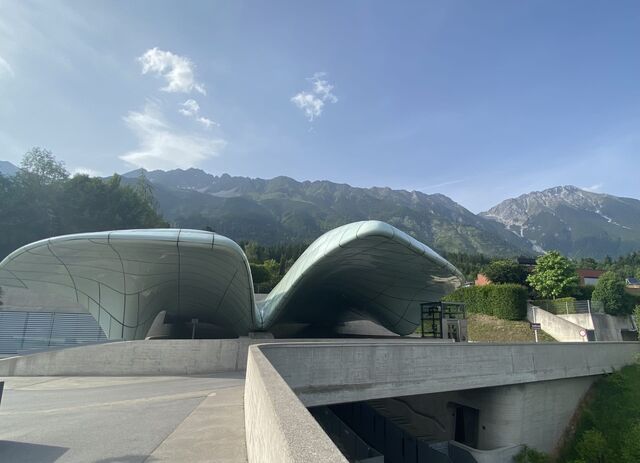Zurich—Innsbruck (via the Arlberg Railway)
After an enjoyable 15.5 hour railway journey around Switzerland, the following morning I returned to Zürich Hauptbahnhof to board a train to Austria. The below map shows my complete route from Zurich, Switzerland to Vienna, Austria. This post will focus on the Zurich—Innsbruck segment of the route.
While there are many trains each day between Switzerland and Austria, there was one that I was particularly interested in: the EuroCity Transalpin train which travels between Zurich and Graz once per day. What distinguishes the Transalpin is its inclusion of a special Swiss Railways panorama carriage. To ride in this special panorama carriage, travellers must book a first-class ticket on the Transalpin which departs Zurich at 8.40am each day. In addition, a small fee (€3) must be paid to reserve a seat in the panorama carriage. Of course I did exactly this to secure my spot in this special carriage.
I arrived at Zürich Hauptbahnhof, full of excitement for the journey ahead. However, when the Transalpin arrived at the platform there was no panorama carriage to be found. Chaos ensued as everyone who held a ticket for this special carriage was forced to search for a seat elsewhere on the train. The regular first-class carriage quickly filled up and the second-class carriages were just as crowded. I feared for one dreadful moment that I wouldn’t even be able to secure a window seat. Fortunately, in the final second-class carriage that I searched, I found one window seat still available.
The train operator provided no explanation as to why the panorama carriage was missing from our Transalpin. However, a train attendant did come around and distribute food vouchers (to the value of 15 Swiss Francs) to passengers who were booked to ride in the panorama carriage. This was frankly inadequate given that the price difference between a first-class ticket with a seat-reservation and a second-class ticket was more than the value of the food voucher. To make matters worse, when I went to the on-board cafe to use my food voucher (which was the only place it could be used), I was informed that it was invalid because it had to be redeemed in Switzerland and the train had already crossed the border into Liechtenstein.
After complaining to the train operator via email, I received a refund for my seat-reservation and the difference in ticket price between a first-class and second-class ticket. Nevertheless, the whole debacle was poorly managed and ultimately very disappointing for myself and other travellers who had booked this specific train for the purpose of riding in the special panorama carriage. Fortunately, as I had decided to break my train journey across Austria into different segments, I was able to experience the panorama carriage on the Transalpin while travelling between Innsbruck and Zell am See a few days later.
The images below show the second-class seating arrangements on the journey from Zurich to Innsbruck. While most of the compartments were crowded with people, mine only had one other occupant. This allowed me to easily move between my window seat and the aisle where I could take photos out the other side of the train.
The journey between Zurich and Innsbruck provided 3.5 hours of stunning alpine scenery. After rolling out of Zürich Hauptbahnhof, the train passed along the south sides of Lake Zurich and Lake Walen. Alongside the crystal-clear waters were views of rolling hills, lush green meadows, and charming Swiss villages dotted with traditional chalets.
Upon reaching the municipality of Buchs, the train reversed direction, before crossing the River Rhine which marks the border between Switzerland and Liechtenstein. Shortly after, we passed through Schaan-Vaduz Station (one of only three railway stations currently in operation in the whole of Lichtenstein!)1 Our time in Liechtenstein was short and sweet as we travelled along the country’s only railway line which stretches a mere 9.5 kilometres. The views continued to consist of rolling green hills and meadows, alongside more mountainous terrain. The people of this small country decided in a 2020 referendum not to upgrade this single-track railway.2
Before long, we had crossed the border into Austria. The remaining 2 hours of the journey were spectacular as the train travelled along the famous Arlberg Railway between Bludenz and Innsbruck.
The Arlberg Railway is Austria’s only east-west mountain railway. It is one of the highest standard gauge railways in Europe and forms part of the route of the Orient Express (more on this later!) Opened in 1883, the mountain railway crosses the Arlberg Pass (the great divide separating waters which flow west into the North Sea and east into the Black Sea).3
The idea for a railway over the Arlberg Pass was first conceived in the 1840s as part of a plan to connect England to Egypt by rail.4 Among other benefits, it was hoped that the construction of a railway line would shorten the delivery time of English mail to India and the Middle East.5 The Victorian engineers planning the railway faced a multitude of technical problems, with this region prone to flooding, avalanches, mudslides, and rockfalls.6 However, with the opening of the Semmering Railway in 1854 (a route I would be taking later in my journey), it became clear that mountain railways in Austria were certainly feasible.7
As we travelled across the Arlberg Pass, the railway hugged the valley side. We journeyed high above the valley floor, ascending to an altitude of 1,311 metres above sea level just before reaching St. Anton am Arlberg. I found myself thinking that this might be some of the most spectacular scenery that I have ever seen from a train!
The train then descended towards the city of Innsbruck which is nestled in the heart of the Austrian Alps. As we rolled closer to my final destination for this segment of the trip, I spotted the Mittenwald Railway across the valley which I would be travelling on a few days later.
After 3.5 hours the train pulled into Innsbruck. I was delighted to see that my hotel was located right next to the railway station, overlooking the train tracks.
Innsbruck
Innsbruck is Austria’s 5th-largest city and the capital of Austria’s state of Tyrol. I particularly enjoyed exploring Innsbruck’s Old Town which is pictured below. The 15th Century Town Tower (Stadtturm) provided stunning views of the surrounding mountains and the Golden Roof (Goldenes Dachl) which is adorned with 2,657 fire-gilded copper shingles and commemorates the 1500 AD wedding of Emperor Maximilian I.8
I also enjoyed walking along the River Inn, past the row of colourful buildings and their mountain backdrop.
Other sites in Innsbruck I came across included the Imperial Palace, constructed in 1460, which is one of Austria’s most iconic landmarks.
An exciting event unfolded as I was sitting in my hotel room, watching the hustle and bustle of trains arriving and departing from Innsbruck Station. Suddenly, amidst the routine traffic, a majestic train pulling into the station caught my eye – none other than the legendary Orient Express! In the 1930s there were several different Orient Express routes, including the Arlberg Orient Express which ran from Paris to Bucharest, via the Arlberg Pass.9 While the Orient Express ceased operation in 2009, the Venice Simplon Orient Express by Belmond (which I saw at Innsbruck Station) continues to run today.
The train attendants rolled out a red carpet before the guests alighted and spent exactly 1 hour at Innsbruck Station. None of the guests ventured beyond the station, instead appearing content to engage in conversation on the platform while relishing the fresh air. I was very lucky to see the train at Innsbruck Station as from what I could tell by looking at the timetable, it only passes through a few times per year. This occurrence was especially exciting given that the novel I was reading at the time was Agatha Christie’s Murder on the Orient Express!10
The hotel bar also provided great views of the railway and surrounding mountains.
The Hungerburg Railway (funicular railway)
Another attraction I enjoyed in Innsbruck was the Hungerburgbahn (funicular railway) which connects Innsbruck’s city centre with the mountain suburb of Hungerburg. The funicular utilises a special hydraulic tilting system that allows the floor of the railway carriages to remain horizontal throughout the journey, even while traveling at a steep gradient.11
The Hungerburgbahn sets out from Congress Station in Innsbruck’s Old Town. From there, trains stop at two intermediate stations, before reaching Hungerburg Station. The journey between Congress Station and Hungerburg takes just 8 minutes. At Hungerburg Station, the funicular links to the Nordkette Cable Car, allowing visitors to continue to the peaks of the Nordkette mountain range.
The Hungerburgbahn is also an architectural landmark, with four futuristic and glacier-inspired railway stations.12
After a few enjoyable days in Innsbruck, I returned to the train station to board the Transalpin to the town of Zell am See, located in the Austrian state of Salzburg.
Glyn Williams, ‘Railways in Liechtenstein’ (2020, Sinfin.net, online). ↩︎
Railway Gazette International, ‘Voters reject Liechtenstein S-Bahn proposal’ (1 September 2020, online). ↩︎
Railway Wonders of the World, ‘Austria’s Rail Transport’ (2022, online). ↩︎
Emma Gregg, ‘The Flightless Traveller: 50 Modern Adventures by Land, River and Sea’ (Greenfinch, 2020) 123. ↩︎
Global Railway Review, ‘The Arlberg Railway – connecting Tyrol and Vorarlberg for 125 years’ (15 May 2009, online). ↩︎
Gregg (n 4). ↩︎
See UNESCO World Heritage Centre, ‘Semmering Railway’ (online). ↩︎
Tyrol.tr, ‘Golden Roof Museum’ (online). ↩︎
The Man in Seat 61, ‘The Truth Behind the Legend: The Orient Express’ (online). ↩︎
It should be noted that Agatha Christie’s Murder on the Orient Express is actually set on the Simplon Orient Express which took a different route to the Orient Express. ↩︎
Aasarchitecture, ‘Hungerburg funicular railway by Zaha Hadid Architects celebrates its 10th anniversary’ (20 December 2017, online). ↩︎
Arch Daily, ‘Zaha Hadid Architects’ Hungerburgbahn Celebrates its 10 Year Anniversary’ (25 December 2017, online). ↩︎
